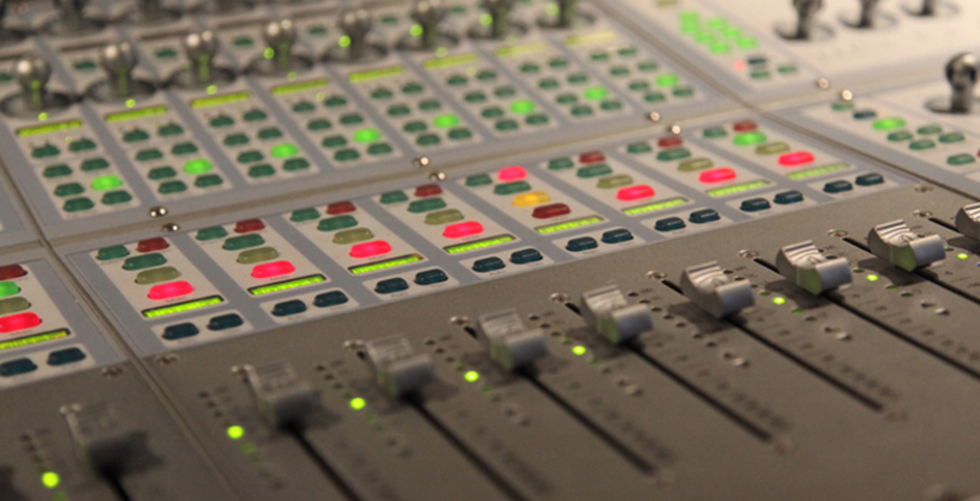
BY TOM BLAKEMORE |
Beautifully Invisible: The Technology of Film Sound
Advances in audio technology are changing the game of independent film.

For me, the movie that changed film sound was Francis Ford Coppola’s essential war epic, Apocalypse Now. Released over 30 years ago, its groundbreaking audio design still stands out as the gold standard for the art of sound design. Don’t remember it? Let me refresh your memory:
In Apocalypse Now, every piece of audio – from the dialogue to the choppers to the rock and roll soundtrack – was carefully captured, mixed, remixed, edited, and/or recreated to fully capture the surrealism that the characters were experiencing both on the river and in their minds. On-location audio was all but foregone in favor of studio recording, and even familiar sounds such as the passing of helicopters were deconstructed with synthesizers and rebuilt from scratch. This close attention to detail helped achieve the dream-like effect that abounds throughout the film, and earned Walter Murch, Mark Berger, Richard Beggs, and Nathan Boxer the Academy Award for Best Sound. (To learn more about the sound design of Apocalypse Now, check out this interview with Walter Murch from Salon.)
Yet In 1979, when Apocalypse Now was released, audio technology had not yet caught up with the creativity of sound designers. All film sound was done using big, expensive hardware, and every step in the process was lengthy. Add in the time it took to share those recordings with others off-site (remember, this is before email), and then edit, re-edit, and finalize the audio, and now we’re talking about an incredibly time-consuming (and, hence, exponentially expensive) portion of the filmmaking process. As a result, high-quality audio was a luxury practically exclusive to big-budget films. Low budget films could not even dream of such a thing.
But thanks to some wonderful advancements in audio technology, this is no longer the case. Today, virtually every film, from the student-produced and independent to the summer blockbuster, now has access to a wide array of audio tools that at one time were unavailable or prohibitively expensive. Everything is being built faster, better, cheaper, and smaller.
One tool that has really revolutionized audio is the Digital Audio Workstation, or DAW. The DAW, which allows for computerized, non-linear editing, manipulation, and mixing of audio came into widespread use in the 1990s and has since seen rapid improvements to its interface and sound-handling abilities. It has also gotten much more affordable. While at one time, one multi-channel tape recorder would cost $100k or more, now, thanks to innovations to the DAW and other equipment, a complete audio set-up can be had for under $25k.
Another part of this digital revolution in audio is miniaturization, and thus portability. Where once we would carry an unwieldy recording rig into the field to collect sound effects and ambient sounds, we now have ready access to pocket-sized, highly-portable handheld recording devices that are capable of full-frequency HD recordings. These devices, such as the Zoom H4n, are not only small, highly accurate and readily available; they are also very affordable.
So what does all this mean for filmmakers?
For one thing, it means a blurring of the traditional roles of film sound design. Whereas once there were very well-defined roles for the sound editor and the re-recording mixer, DAW technology allows the editor to perform mixing functions as part of his work and vice versa. As a result, it is now quite possible for one craftsman (or perhaps a small team) to complete a finished soundtrack without ever leaving the computer environment.
For another thing, it means no more waiting on delivery of film reels or video tapes. Just as you might get minute-by-minute project updates from your office via your smart phone, filmmakers can use similar technology to share audio instantly with anyone, anywhere in the world. Now, post-production crews in any location can be up and running in a matter of minutes instead of days; and they can easily, affordably, and quickly send experimentations and creative ideas back to the director to check sound concepts.
For students and teachers of film audio, this is all great news. Since equipment costs less, more young people can get hands-on, intensive training in this craft and have high-quality results in a short period of time. In our courses at Tribeca Flashpoint Media Arts Academy, for example, students can take to the streets to learn and experiment with the equipment they will be using on location. When they have questions, they can text an instructor from anywhere they might be, and even send the instructor short videos and audio clips to assist in problem-solving and troubleshooting.

Thanks to this increased access to better equipment and improved ability to collaborate remotely, young and independent filmmakers can now create sound designs as elaborate and nuanced as Apocalypse Now was over 30 years ago. For film viewers, this means that even the smallest indie picture can feel big using the beautiful, invisible magic of sound.